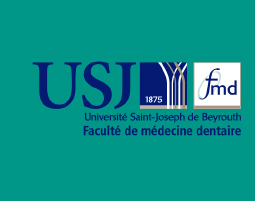International Arab Journal of Dentistry
Abstract
The aim of this study was to evaluate a new treatment modality of dentin hypersensitivity combining nano-fluor-hydroxyapatite (NFH) and Nd:YAg laser and to compare its effect with other therapies such as cyanoacrylate and sodium fluoride using scanning electron microscope. Sixty freshly extracted human premolar teeth were collected. The coronal portion of each tooth was removed and the canals were instrumented and obturated with gutta-percha. A 3 mm wide ring of root surface was cut with a rotary instrument to expose the underlying dentin. Teeth were randomly separated into six groups of ten teeth each: 1) combination of NFH and Nd:YAG laser; 2) Nd:YAG laser; 3) NFH; 4) desensitizing cyanoacrylate resin bonding (Tetric® N Ceram); 5) 2% sodium fluoride; 6) control group. The topography of each group after treatment was determined by scanning electron micrograph. The percentage of occluded tubules was calculated by dividing the total number of occluded tubules by the total number of tubules in each photomicrography. The highest occluding effect of dentinal tubules was obtained for the combination of NFH and Nd:YAG laser (99.8 ± 3.3%). However, no significant difference was found among groups 2 (83.1 ± 5.2%), 3 (82.3 ± 4.4%), 4 (82.1 ± 7.2%) and 5 (81.4 ± 3.5%) (p>0.05); these treatment modalities showed similar occluding effect on dentinal tubules. The use of NFH and Nd:YAG laser was beneficial for closure of exposed dentinal tubules compared to other treatment modalities. This approach could be promising for dentin hypersensitivity treatment.
Recommended Citation
ALI, Saeed; AL SAFFI, Kholood; and NIAMA DAYEM, Raad
(2013)
"Treatment of dentin hypersensitivity with a combination of nano- fluorhydroxyapatite and Nd:YAG laser,"
International Arab Journal of Dentistry: Vol. 4:
Iss.
2, Article 6.
Available at:
https://digitalcommons.aaru.edu.jo/iajd/vol4/iss2/6

